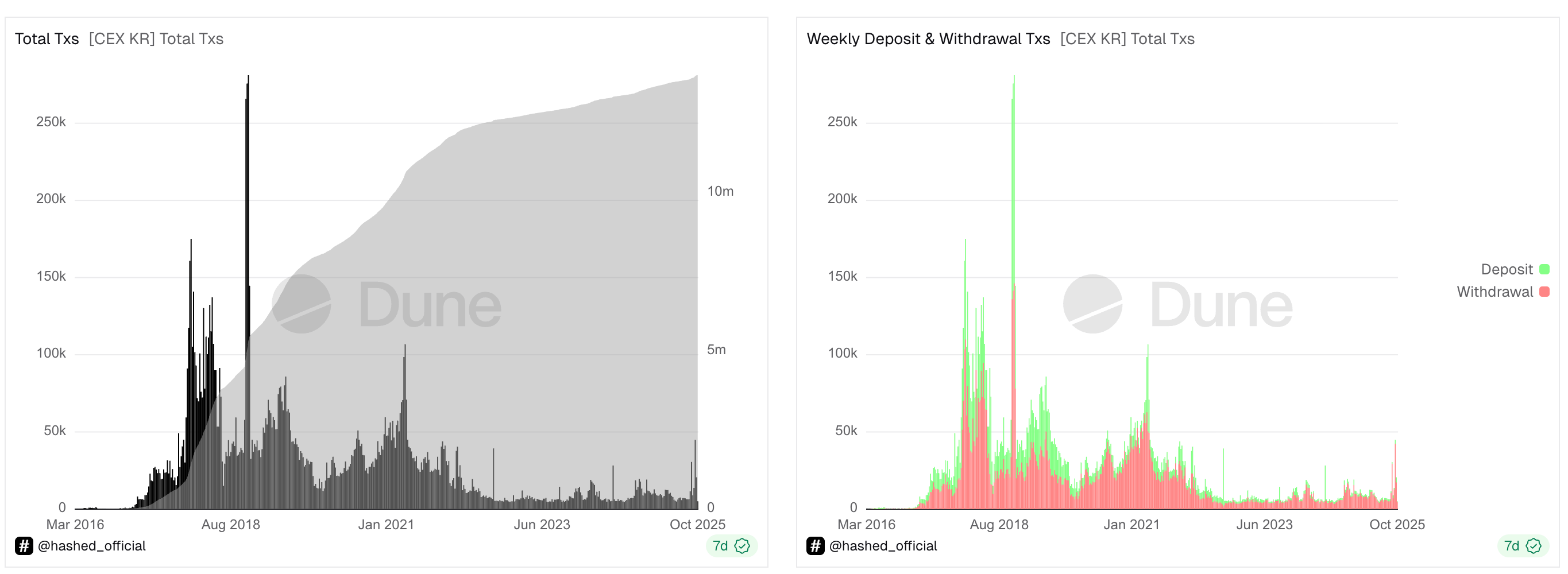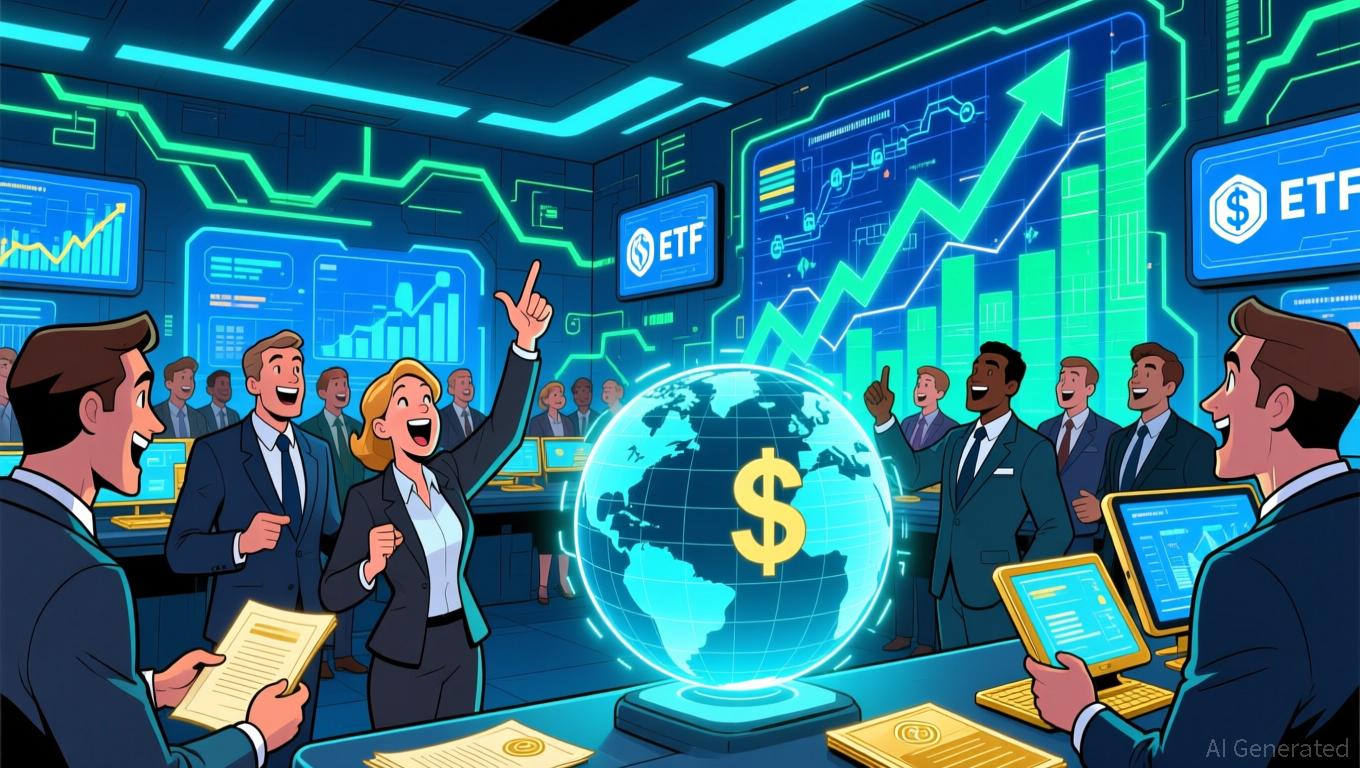The Great Korean Pivot: From Memecoins to Machine Chips
For years, South Korea was the global heartbeat of crypto speculation. It became the place where digital coins traded at a premium, and where retail investors moved markets overnight. The “Kimchi Premium” became shorthand for a national obsession: Rampant and frenetic trading activity unrivaled by any region across the globe.
But by late 2025, the story has reversed. The same traders who once hunted for the next altcoin gem on Upbit are now glued to Korean stock exchange tickers, swapping meme tokens for memory chips and high-bandwidth semiconductors. The crypto charts have gone quiet — and a new speculative engine has taken their place.
A market gone silent
Upbit, once the undisputed hub of Korean crypto mania, now trades at a fraction of its former pace. Average daily volumes have dropped nearly 80% from a year ago, slipping from roughly $9 billion in late 2024 to just $1.8 billion by November 2025. Bithumb, Korea’s second-largest exchange, has suffered a similar fate, losing more than two-thirds of its liquidity over the same period, according to reporting from Wu Blockchain.
What was once a nightly national pastime, the endless churn of small-cap coins and chatroom rumors, has evaporated. Even volatility itself has collapsed. Where daily volumes once swung wildly between $5 billion and $27 billion, 2025’s trading bands have flattened to a muted $2 to $4 billion range.
Data from analytics provider Dune shows that the drop in activity is compounded when compared to 2018, when at the mania's peak Korean exchanges facilitated 280,000 deposits per day; the daily figure hasn’t exceeded 50,000 since 2021.

The rise of a new obsession
The vacuum left by crypto didn’t last long. Retail investors simply migrated to a different table — the Korean stock market, which has staged one of the most explosive rallies in its history.
The KOSPI index has surged more than 70% year-to-date, setting a number of record highs. In October alone, it posted its strongest monthly gain since 2001, climbing 21% and logging 17 new intraday records. The frenzy has been led by AI-linked giants like Samsung Electronics and SK hynix, whose combined daily turnover now makes up more than a quarter of the entire exchange.
In a country that once traded crypto as a kind of collective hobby, the psychology feels familiar. The same spirit of retail speculation has resurfaced, only this time it’s wearing a suit of semiconductor stocks.Data reported by the Korea Times showed the amount of active trading accounts in the nation jumped from 86.57 million at the turn of the year to 95.33 million as of Oct. 31.

Retail euphoria spills over into equities
Unlike the meme-driven altcoin rallies of old, Korea’s equity boom has a more tangible backbone. AI is the global growth narrative of the decade, and Korea happens to control one of its most critical supply chains.
As Nvidia and AMD fuel much of the world’s demand for AI hardware, Korean firms like SK hynix and Samsung have become indispensable. Their dominance in high-bandwidth memory (HBM), a key component for AI training, has turned them into national champions.
Add to that a government keen on revitalizing domestic markets, and you get what some analysts call a “policy-backed bull run.” President Yoon Suk Yeol’s administration has pushed reforms to reduce the long-standing “Korea Discount,” encouraging higher dividends, tighter governance and incentives for retail and institutional investment at home.
Same spirit, different casino
Speculation in the Korean crypto community was never about restraint; it was about rhythm and speed. That hasn’t changed. Margin lending is booming again, leveraged ETFs are flying off the shelves and retail participation has doubled in just a year. According to Bloomberg data, leveraged retail positions now make up nearly 30% of total holdings, with younger traders leading the charge.
In other words, the migration from crypto to equities isn’t a retreat, it’s a reallocation of risk appetite. Koreans haven’t abandoned speculation; they’ve just found a venue where the leverage feels legitimate and the upside patriotic.
But this shift has consequences. Without Korean retail as a liquidity anchor, global crypto markets have lost one of their most consistent buyers. Memecoin rallies that once lit up Korean chatrooms now fizzle faster. And the wider market in general is in need of a spark; bitcoin currently trades around $100,000 despite recording an all-time high one month ago, while several altcoins lost upwards of 20% over the past month.
Waiting for the next spark
Crypto’s “Kimchi traders” may have stepped away, but history suggests they won’t be gone forever. When the AI trade cools, which analysts are suggesting may be on the near horizon, or when the next major crypto narrative arrives, the same traders could come roaring back, armed with new capital and sharper reflexes.
For now, Korea’s retail traders have swapped blockchains for circuit boards, chasing the same rush in a different arena.
Disclaimer: The content of this article solely reflects the author's opinion and does not represent the platform in any capacity. This article is not intended to serve as a reference for making investment decisions.
You may also like
XRP News Update: XRP ETFs Spark Optimism—Is $1,115 Within Reach?
- XRP's price surge to $2.20 is driven by ETF launches, with $422M inflows from Franklin Templeton and Grayscale. - Technical indicators suggest a potential $2.50+ rally if support at $1.84 holds, with long-term forecasts reaching $26.50 by 2030. - Institutional adoption of Ripple's ODL and Ripple USD's $1B+ market cap highlight growing utility beyond remittances. - Regulatory clarity post-SEC ruling and macroeconomic factors remain critical for XRP's $1,115 potential in ultra-bullish scenarios.

The Importance of Security Systems in Contemporary Investment Choices
- Cybersecurity investments are now strategic priorities across education, finance, and tech sectors, directly impacting investor confidence and financial stability. - Education institutions adopting zero-trust models and endpoint security see measurable ROI, though 61% rely on general funds for cybersecurity amid rising cyber threats. - Financial firms leveraging AI for fraud detection and third-party risk management gain competitive edges, as cyberattacks could trigger macroeconomic instability per IMF w

Solana News Update: Even with a 38% Decline in Price, Solana ETFs Attract $613M as Institutions Focus on Core Fundamentals
- Institutional investors poured $613M into Solana ETFs despite a 38% price drop, driven by high staking yields and network scalability. - VisionSys AI and Marinade plan a $2B Solana treasury strategy, targeting $500M in SOL purchases via staking partnerships. - Bitwise's BSOL ETF dominated inflows at 89%, outperforming Bitcoin and Ethereum ETFs amid diverging price and capital trends. - Solana's $2.85B annual revenue and 6%+ staking yields contrast with Ethereum's 45% economic decline, signaling instituti

Texas invests 5 million in strategic Bitcoin reserve

